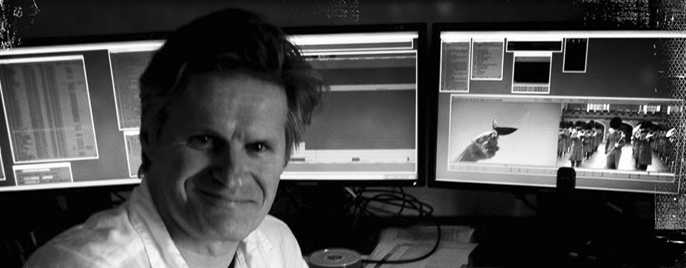The 2 part TV series is a far reaching exploration of a pivotal moment in WW2. How did you intertwine the scale with the personal stories?
Getting the balance right between the big picture, high energy story of the war and the personal stories of the men in battle was always going to be the real trick in engaging an audience with this film. We wanted to create an “experiential” feel to the battle scenes, but the film would not have worked if we didn’t feel for the characters. Director Steve Westh was very keen to explore what daily life was like for the men in the trenches. In the end I think the balance came from having some wonderful veterans telling us their most personal and in some case intimate stories and being able to dramatise these to contrast with the bigger story of the war.
Was editorial involved in scripting the combined interviews, archival and reenactments?
The drama shoot was scheduled well into the post production phase so we could assemble the film narrative quite tightly before filming the dramatised scenes. This meant some scenes were revised to suit the details of the interviews, some scenes were dropped and some new scenes added. We used the early editing phase as very much a part of the scriptwriting process. This also meant we were able to trawl through the considerable archival footage in order to find reference material for the drama shoot and in many cases we constructed scenes around specific archival shots that we could intercut with dramatized shots.
Sound is a vital element. What was your involvement?
Sound is always something that informs greatly on the way I edit a film. I started my editing career as a sound editor so I still do a lot of sound editing work as I cut the pictures. The sound track helps me create the pace and rhythm of the edit as does music. When I edit drama films I generally don’t cut with temp music for the first cut. I usually only start adding temp music once the whole film is assembled and we’re into the fine cutting. For docos and docu-dramas I generally use temp music much earlier. I think this is because the sound track for these are more complex in terms of the elements that I’m editing and manipulating…narration, interview that becomes VO, sync dialogue and FX and music. All of these elements are in a constant state of flux as pictures and sound slip and slide to create the rhythm and pace of a scene.
How long did you have to edit? Was it staggered, and did you have time to experiment?
I came on at the assembly stage and it was a continuous process from there. When the drama started shooting I was editing it into the assembly on a daily basis. Because this was an anniversary film with a strict delivery deadline, it was decided at this stage I would need some help with the assembly, so I was lucky enough to have Melbourne editor Uri Mizahi come over to Perth to help edit the second episode “Alamein”. It was great having him here, not just to share the workload but also to share ideas. As an editor I seldom get to work with other editors. It was great having Uri to collaborate with.
What is your favourite experience?
Working with director Steve Westh. Editing for me has always been about collaboration. This is our fourth film together and our creative sensibilities have always just clicked. He also never loses sight of the heart and soul of the film even among the chaos and confusion of war (that sometimes finds its way into the cutting room too).
(January 2014)
